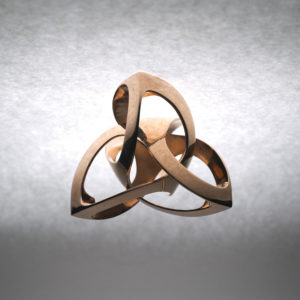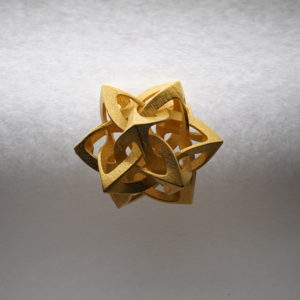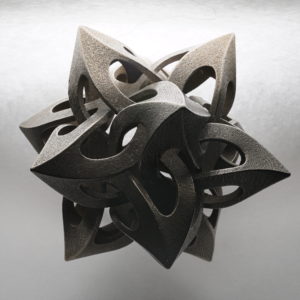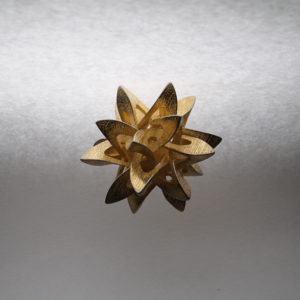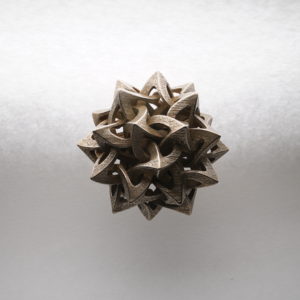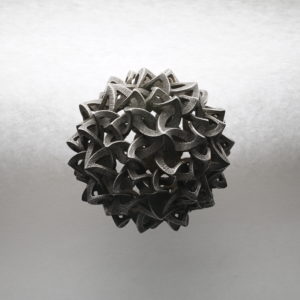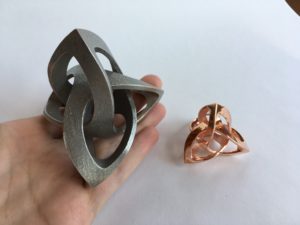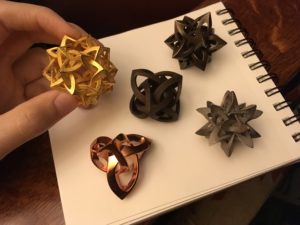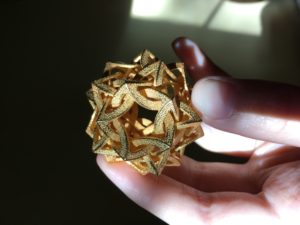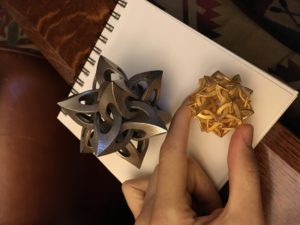Arachne·hedron—Arachne from Ancient Greek ἀράχνη (arákhnē, “spider”), and -hedron from Ancient Greek ἕδρα (hédra, “face of a geometrical solid”). Arachnehedrons are polyhedra that have been “woven” through themselves. (Formerly known as yodawgahedrons. And yes I made these terms up. If anyone knows of a “legitimate” name for this idea please let me know!)
Arachne was a mortal weaver who challenged Athena to a weaving contest in Ancient Greek mythology—Athena turned her into a spider.
The first shapes began as stellations of the Platonic solids (except the cube) which then had holes cut in them so that they could be “woven through” themselves and connected elsewhere. Over time they’ve converged on certain properties, like mixing gradual curves with sharp edges and points. Some terminology has evolved too—each is made of “spikes” and “hubs” that connect to “spokes,” with the spokes often twisting so that a wide face on one side of a spoke transitions into a thin face on the next. Sometimes the spokes twist through the object instead of connecting a spike to an adjacent hub directly (though this tends to make them more expensive, using more material in a way that can’t really be seen, so I’m probably going to avoid that more).
In the simpler shapes there is more room for the spokes to have a large thickness:width ratio (they can be thin but wide). In the tetrahedron & cube it’s about 6 mm wide and 1mm thick for the smaller sculptures.
I’ve aimed for two sizes, the smaller is typically close to 50 mm in diameter, and the larger around 100 mm. Eventually they’ll each be available at either my Shapeways shop or my i.materialise shop. (Or likely both.) But I’ve been dragging my feet on that side of things, mostly because I like designing them so much, and I’m not really a big fan of sales.
